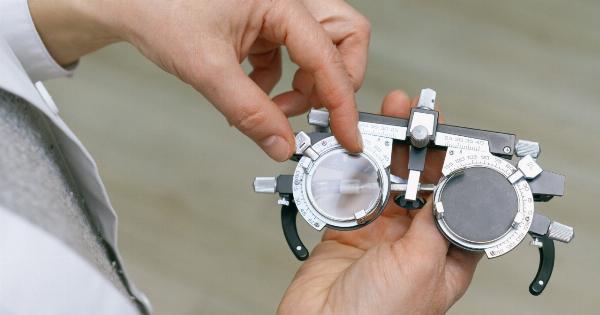General anesthesia is a commonly used medical procedure that allows patients to undergo surgery without feeling pain or being aware of the procedure.
While it is generally safe when administered by trained professionals, there is a hidden risk associated with general anesthesia – the rare occurrence of patients waking up during surgery. This phenomenon, known as “anesthesia awareness” or “intraoperative awareness,” can have lasting psychological and emotional effects on patients.
In this article, we will explore the risks and causes of anesthesia awareness and discuss ways to prevent and address this distressing situation.
What is General Anesthesia?
General anesthesia is a state of controlled unconsciousness induced by medications to ensure a pain-free surgical experience.
It involves a combination of drugs that affect the brain and nervous system, providing temporary loss of consciousness, muscle relaxation, and elimination of pain sensations. By rendering the patient unresponsive, general anesthesia allows surgeons to perform invasive procedures without the patient experiencing discomfort or being aware of what is happening.
The Risks of General Anesthesia
General anesthesia is generally safe, and severe complications are rare. However, there are inherent risks involved in its administration, including:.
1. Allergic reactions to medications
2. Adverse reactions to anesthetics
3. Breathing difficulties
4. Elevated blood pressure or heart rate
5. Nausea and vomiting
6. Confusion or disorientation upon waking up
7. Postoperative delirium
8.
Rarely, waking up during surgery.
While waking up during surgery is an incredibly uncommon occurrence, it can be a distressing and traumatic experience for patients. The underlying causes of anesthesia awareness are varied and can be attributed to several factors.
Causes of Anesthesia Awareness
There are various causes of anesthesia awareness, including:.
1. Inadequate dosage: Administering too little anesthetic medication can result in insufficient sedation, increasing the likelihood of patients regaining consciousness during surgery.
2. Medication interactions: Certain medications can interact with anesthetics, affecting their effectiveness and potentially leading to anesthesia awareness.
3. Pharmacogenomic factors: Genetic variations can influence an individual’s response to anesthetics, resulting in unexpected reactions and insufficient sedation.
4. Emergency situations: In emergency surgeries, the limited time available for anesthesia administration may increase the risk of underdosing or inadequate sedation.
5. Equipment malfunction or human error: Mistakes in drug administration, incorrect machinery settings, or human error can contribute to anesthesia awareness.
Preventing Anesthesia Awareness
While anesthesia awareness is a rare occurrence, medical professionals take precautions to minimize the risk. Some preventive measures include:.
1. Preoperative patient evaluation: Thoroughly assessing the patient’s medical history, current medications, and potential risk factors can help identify individuals who may be at higher risk for anesthesia awareness.
2. Anesthetic monitoring: Continuous monitoring of vital signs, such as heart rate, blood pressure, and oxygen saturation, helps ensure adequate depth of anesthesia throughout the procedure.
3. Individualized anesthesia plans: Tailoring the anesthesia approach based on the patient’s unique characteristics can help optimize sedation levels and minimize the chance of anesthesia awareness.
4. Improved technology: Advances in anesthesia equipment and monitoring systems have made it easier to track patient responses, ensuring appropriate medication dosage and minimizing the risk of awareness.
5. Open communication: Maintaining clear and open communication between the patient and the surgical team allows for information exchange regarding the patient’s comfort level and any unusual sensations during the procedure.
Dealing with Anesthesia Awareness
If a patient experiences anesthesia awareness, it is crucial to address their emotional and psychological well-being promptly. Here are some steps that can be taken:.
1. Psychological support: Offering psychological counseling or therapy can assist patients in coping with the emotional impact of anesthesia awareness. Providing a safe space for them to express their feelings and concerns is essential.
2. Education and reassurance: Explaining the rarity of anesthesia awareness and providing information on its causes can help alleviate patients’ fears about potential future surgeries.
3. Support groups: Encouraging patients to join support groups or connect with others who have had similar experiences can foster a sense of community and provide a platform for sharing coping strategies.
4. Research and prevention: Continual research and development of anesthesia techniques can lead to improved protocols and a decreased risk of anesthesia awareness.
The Importance of Patient Advocacy
Patients undergoing surgery should be proactive advocates for their own health and well-being.
It is crucial to communicate openly with the medical team, provide accurate information about medical history and current medications, and ask questions about the anesthesia protocol. By actively participating in their care, patients can contribute to a safer surgical experience and reduce the risk of anesthesia awareness.
Conclusion
While general anesthesia is generally safe and effective, there is a small risk of anesthesia awareness during surgery.
It is crucial for medical professionals and patients to be aware of this potential complication and take appropriate steps to mitigate the risk.
By implementing preventive measures, promptly addressing awareness if it occurs, and supporting affected patients through counseling and education, the medical community can work to minimize the psychological and emotional impact of anesthesia awareness.





























